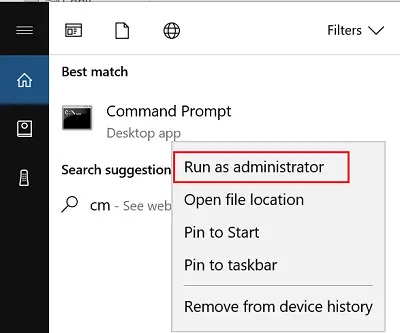Luckily, there is a built-in Windows tool like DISM Tool in Windows 11/10/8 or System Update Readiness Tool in Windows 7/Vista that can resolve the problem. If running the Windows Update Troubleshooter or the WU online troubleshooter has not helped you, perhaps this post will.
Fix corrupted Windows Update system files
To fix Windows Update corruptions, open an elevated command prompt window. To do this, type Command Prompt or CMD simply in the Search box, right-click Command Prompt, and choose ‘Run as administrator’ option. If you are prompted for an administrator password or confirmation, type the password, or click Allow.
Once done, type the following command, and then press Enter to Run DISM: Please note that here you need to be patient since the process can take up to several minutes to complete. When you run the command mentioned above, DISM will replace potentially corrupted or missing system files with good ones. However, if your Windows Update client is already broken, you will be prompted to use a running Windows installation as the repair source or use a Windows side-by-side folder from a network share, as the source of the files. You will then be required to run the following command instead:
Here you have to replace the C:\RepairSource\Windows placeholder with the location of your repair source. Once the process is complete, DISM will create a log file in %windir%/Logs/CBS/CBS.log and capture any issues that the tool finds or fixes. Close the command prompt, and then run Windows Update again and see it has helped.
Users of Windows 7, Windows Vista, Windows Server 2008 R2, and Windows Server 2008 will have to download the CheckSUR Tool and then run it. If you need more help on this subject, check this post – Windows Updates fail to install or will not download.
